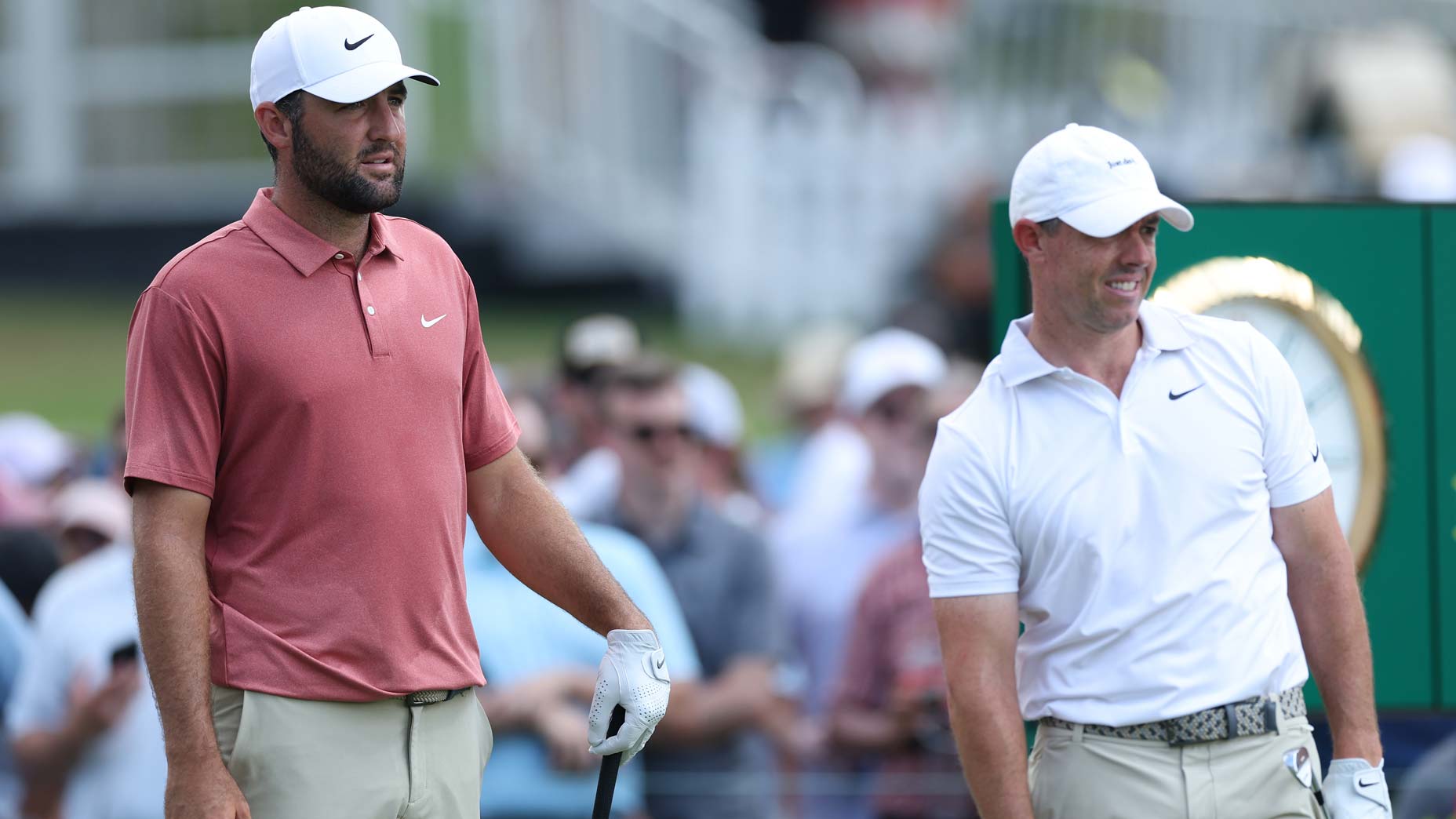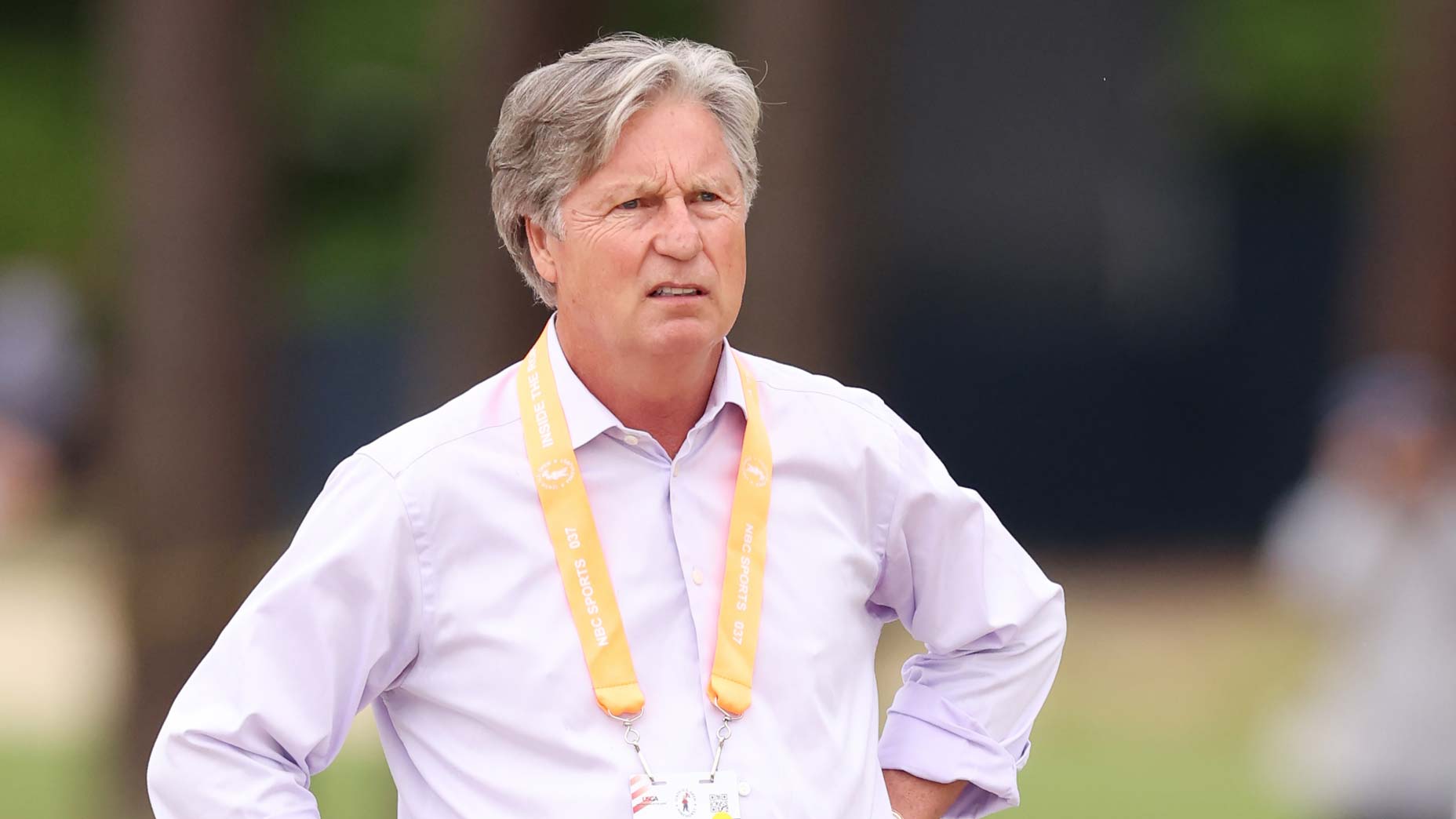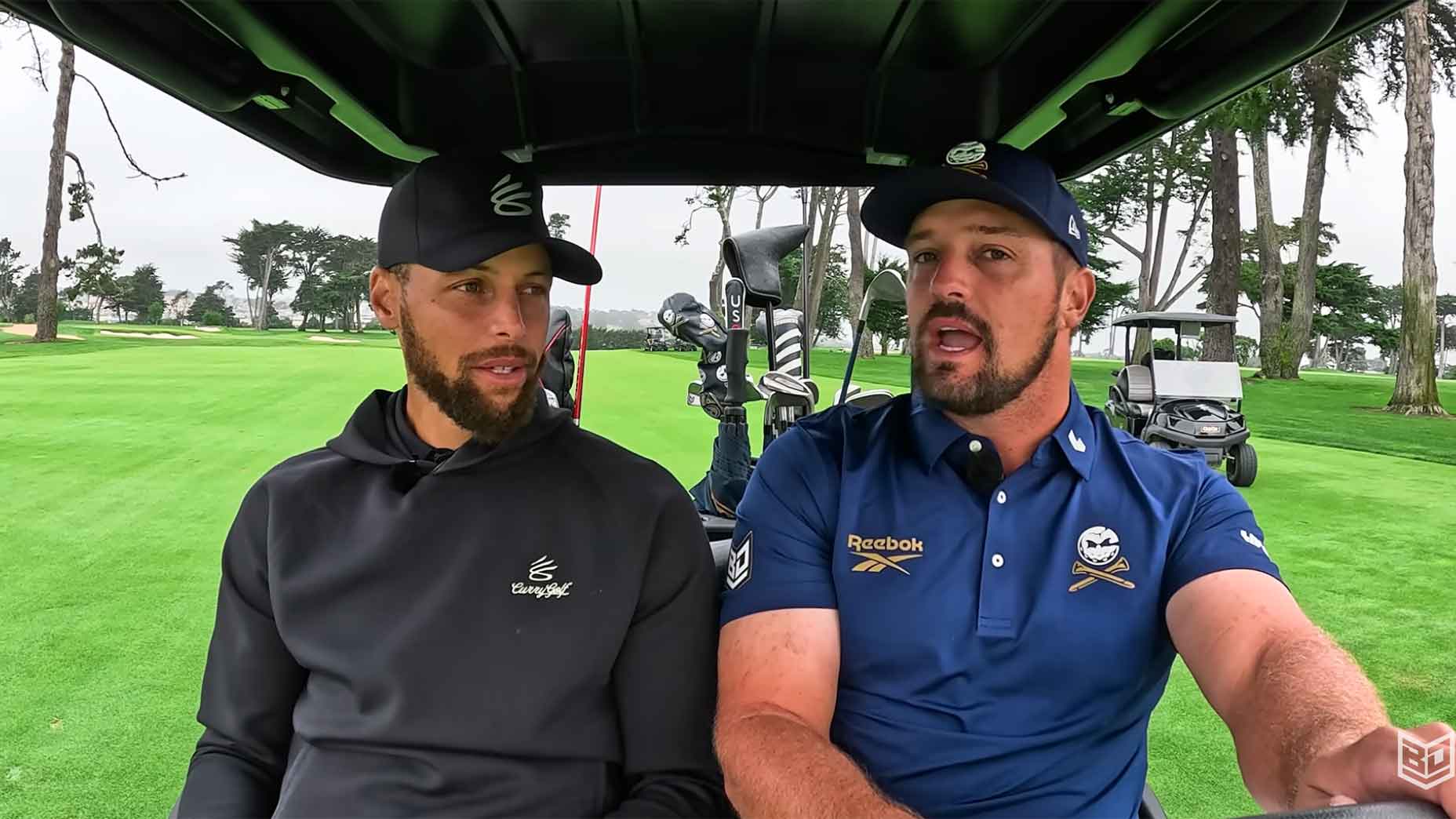The first two rounds of the Shot Clock Masters are in the books, and the new format is receiving rave reviews.
Following a player survey that showed a desire for sped-up play, the European tour implemented a pilot program at this week’s event in Atzenbrugg, Austria. The rules are relatively simple: players have 40 seconds to hit their shot; if they go over that limit, they receive a one-stroke penalty (10 extra seconds are allotted to the first player in the group, and each competitor is given two time extensions per round). Times are policed by rules officials in carts with large screens displaying a player’s remaining time.
Through Friday’s round, no penalties for slow play had been given out, although video of Chase Koepka showed he pushed the timer to the wire during one shot on Thursday, the clock striking “0” just as he hit.
European Tour CEO Keith Pelley’s goal was to shave 45 minutes off the average round time. He’s not there quite yet — but he’s getting close. During the first round, average round time dropped significantly from the tour’s average: from 4 hours 47 minutes to a brisker 4:13 pace. Interestingly, scores dropped, too. Last year’s first round saw an average score of 72.96, which fell to 72.36 in this year’s opener. Five threesomes played Thursday’s round in under four hours, including the group featuring Peter Hanson.
“I think this is the way we should play golf, and this is the way I was born and raised to play the game,” Hanson said.
Not everyone was in favor of the idea, of course. Some pros, like Geoff Ogilvy and Graeme McDowell, consider slow play a problem worth addressing but don’t see a shot clock as an appropriate solution. But most of the field in attendance seemed far more receptive to the idea.
“On the 10th, I actually took a lot of time, I think I had four seconds left or something, but I think this kind of system fits me well,” said first-round leader Oscar Lengden. “I’m a quick player, I like playing quick, I dislike waiting. For me it feels great out there.”
Could a shot clock ultimately translate to the PGA Tour? Just two Americans — Koepka and Daniel Im — were in the field, but others were tuning in. Billy Horschel was among those who expressed his approval on Twitter. “Loving this shot clock deal on the European tour,” he wrote. “Amazing how fast rounds go when players play within the rules. And guys are still playing great golf. Shocking! …wish we had something like this on the PGA Tour.”
 Perhaps the most striking part of watching the first run-through of players on the clock was just how little of the clock they actually used. While the timers were generous in when they started the countdown, players frequently hit their shots before the clock had reached 30 seconds. Phachara Khongwatmai and Ryan Evans were among those who used both timeouts on day one.
Perhaps the most striking part of watching the first run-through of players on the clock was just how little of the clock they actually used. While the timers were generous in when they started the countdown, players frequently hit their shots before the clock had reached 30 seconds. Phachara Khongwatmai and Ryan Evans were among those who used both timeouts on day one.
Nor is the Shot Clock Masters just a young man’s game: 54-year-old Miguel Angel Jimenez led for much of the second round, serving as a reminder that smooth is fast, too. “When I first turned pro, I didn’t think I would see a tournament like this,” Jimenez said earlier in the week. “They have improved different elements of the game the last few years and trying to make something different, try to see how much we can improve the show. We are here for that and to show our skills, it’s nice.”






